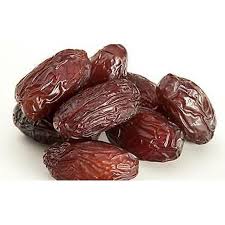
Decoding Medjool Date Pricing Factors in the International Market
Introduction
Discovering the Exquisite Medjool Dates
Medjool dates are a revered delicacy known for their luscious sweetness and tender texture. In this blog post, we will delve into the captivating world of Medjool dates and uncover the factors that influence their pricing in the international market. By understanding these elements, date enthusiasts and consumers can gain valuable insights into the valuation and economics surrounding Medjool dates.
Factors Influencing Medjool Date Pricing
1. Growing Conditions and Harvesting Challenges
Climate and Geographical Factors
The geographical location and climate conditions in which Medjool dates are cultivated play a significant role in pricing. Ideal growing conditions, such as warm and arid climates, contribute to higher yields and better quality dates, positively impacting their market value.
Water Availability
The availability of water resources is crucial for the successful cultivation of Medjool dates. Areas with ample water supply or advanced irrigation systems can produce higher-quality dates, potentially commanding higher prices in the international market.
Labor Intensity and Harvesting Challenges
The labor-intensive nature of Medjool date cultivation, including manual pollination and careful harvesting, influences pricing. The more labor-intensive the process, the higher the production costs, which can contribute to increased market prices.
2. Quality and Grading
Size and Appearance
The size and visual appeal of Kurma Medjool are essential factors in determining their market value. Larger dates with a plump and attractive appearance tend to command higher prices due to their perceived quality and aesthetic appeal.
Taste and Texture
The flavor profile and texture of Kurma Medjool significantly impact their pricing. Dates that exhibit exceptional sweetness, richness, and a luxurious melt-in-your-mouth texture are often in higher demand and can fetch premium prices.
Consistency and Uniformity
Consistency and uniformity in size, color, and overall quality across a batch of Medjool dates contribute to their market pricing. Buyers often seek consistent dates that meet specific standards and offer a premium experience to consumers.
3. Supply and Demand Dynamics
Availability and Scarcity
The overall supply of Medjool dates, influenced by factors such as seasonal variations and crop yields, affects their pricing. Limited availability due to factors like weather conditions or increased demand can contribute to higher market prices.
Market Demand and Consumer Trends
Consumer demand and evolving market trends play a vital role in shaping Kurma Medjool pricing. Increased awareness of their health benefits, rising popularity as a natural alternative sweetener, and growing interest in gourmet food contribute to heightened demand and potential price increases.
Export and Import Regulations
Export and import regulations, including tariffs, duties, and trade agreements, can impact the pricing of Medjool dates in the international market. Changes in these regulations can influence costs incurred during import/export processes, subsequently affecting the final market price.
Consumer trends that have influenced the pricing of Medjool dates:
Key Highlights:
Conclusion
Understanding the various factors that influence the pricing of Kurma Medjool in the international market provides valuable insights for date enthusiasts and consumers. Growing conditions, quality and grading, and supply and demand dynamics all contribute to the valuation of these exquisite dates. By decoding the elements that shape Medjool date pricing, individuals can make informed decisions and appreciate the intricate economics behind this beloved fruit.